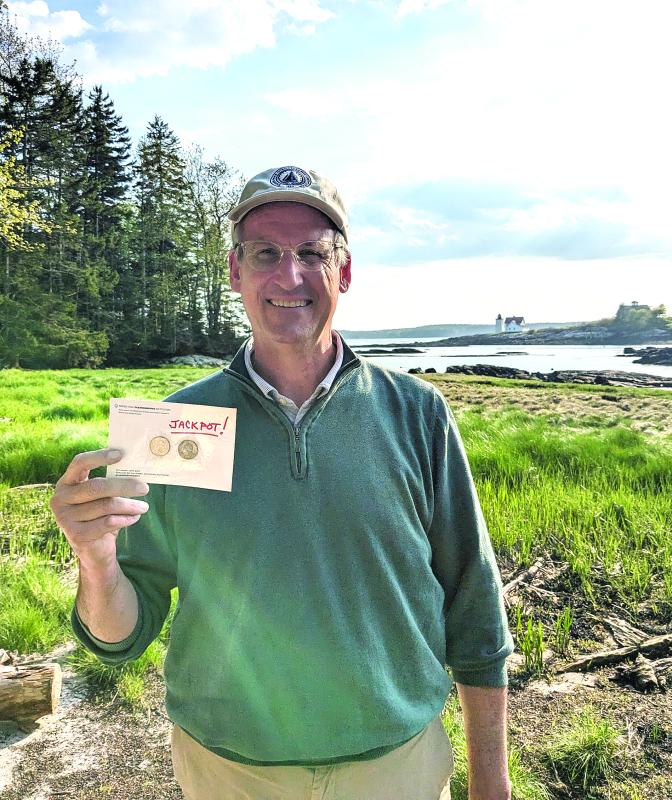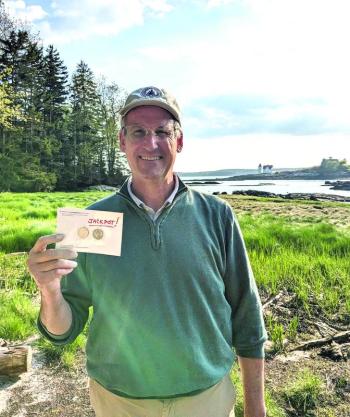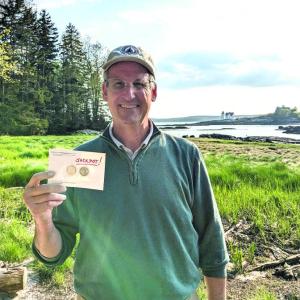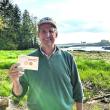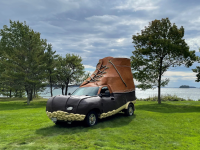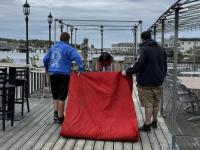Message in a bottle found on Southport after 56-year-long journey
They say a journey of a 1,000 miles begins with a single step, but for bottle No. 71645, the journey began falling out of a U.S. Coast Guard plane over Daytona Beach, Florida.
The bottle, released on Thanksgiving Day in 1968, was part of a study led by oceanographer Dean “Bump” Bumpus of Woods Hole Oceanographic Institution (WHOI) to measure ocean currents in the North Atlantic. Between 1956 and 1972, about 300,000 bottles were released into the ocean, according to a WHOI article.
Last April, Southport native Charlie Britton was cleaning up storm debris in the marshes around his home, near Hendricks Head Beach, when he noticed a bottle sticking out of the sand. It was in pristine condition. “Break this Bottle,” instructed the folded-up paper trapped inside. When Britton’s attempts to unlodge the rubber topper failed, he did as instructed and shattered the glass against a nearby rock. The paper contained instructions to send information back to WHOI, providing details about when and where the bottle had been found. The reward? 50 cents, or about $4.50 today.
“It was just a really fun discovery. And I think it was fun for Woods Hole too,” Britton said.
No. 71645 is one of the latest bottles making its way back home long past its expected return date. In 2014, a bottle from a 1956 drop was found on Sable Island, 186 miles southeast of Halifax, Nova Scotia. It's impossible to know how long either bottle was buried before being unearthed, but Britton, a retired educator, believes there is still value in their late discoveries.
“These are the kind of stories that help perpetuate research,” he said.
In particular, it highlights the history of oceanography before the days of highly efficient, highly accurate GPS when mapping ocean currents with bottles and seabed drifters was the only way to obtain such data. According to WHOI, the program saw about a 10% return rate, totaling 30,000 data points. It may be considered sparse by today’s standards as oceanographers can collect millions of measurements over the course of just one study, but according to the Navy and WHOI, it was invaluable information at the time.
As for Britton, he did end up getting his 50 cents, plus a WHOI hat and bumper sticker.
The reconstructed bottle will be available for viewing at Hendricks Hill Museum in Southport this summer.

